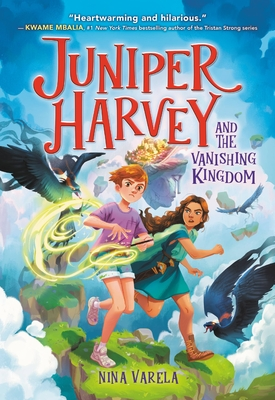As I mentioned in my review of The Carrefour Curse there are two tasks in the 2024 Read Harder Challenge that are specifically about middle grades books. Juniper Harvey and the Vanishing Kingdom is my selection for task 6: read a middle grade book with an LGBTQIA main character. Right off the bat, this is a good book, in fact Nina Varela can write better than most authors I’ve come across in the past year or more. I just wish Middle Grades was an audience demographic that worked for me more reliably as a reader, it is where I most clearly feel the “this book is not written for me” gap between children’s/YA and Adult literature. I think I would LOVE the adult version of this story, and even really enjoy the YA one. But the MG version left me forcing myself to pick it back up, which is why I eventually went ahead and granted myself a DNF for my birthday.
What we have here is a retelling of the Pygmalion/Galatea myth set in a modern Floridian middle school. From Goodreads: “When Juniper Harvey’s family moves to the middle of nowhere in Florida, her entire life is uprooted. As if that’s not bad enough, she keeps having dreams about an ancient-looking temple, a terrifying attack, and a mysterious girl who turns into an ivory statue. One night after a disastrous school dance, Juniper draws a portrait of the girl from her dreams and thinks, I wish you were here. The next morning, she wakes up to find the girl in her room…pointing a sword at her throat! The unexpected visitor reveals herself as Galatea, a princess from a magical other world. One problem—her crown is missing, and she needs it in order to return home. Now, it’s up to Juniper to help find the crown, all while navigating a helpless crush on her new companion. And things go from bad to worse when a sinister force starts chasing after the crown too.”
While I picked this one up based on its queer representation, it was the anxiety representation that really stood out to me. Both are incredibly well handled but the way Varela crafts Juniper to show her readers ways in which to deal when they are feeling overwhelmed felt truly excellent to me and something I would have loved to have seen more of when I was a much younger reader. So, if fantasy middle grades adventuring sounds like your kind of thing, I really hope you pick this up and have a better time than I did – because I’m like 98% sure I’m the problem in this book relationship. 😊








